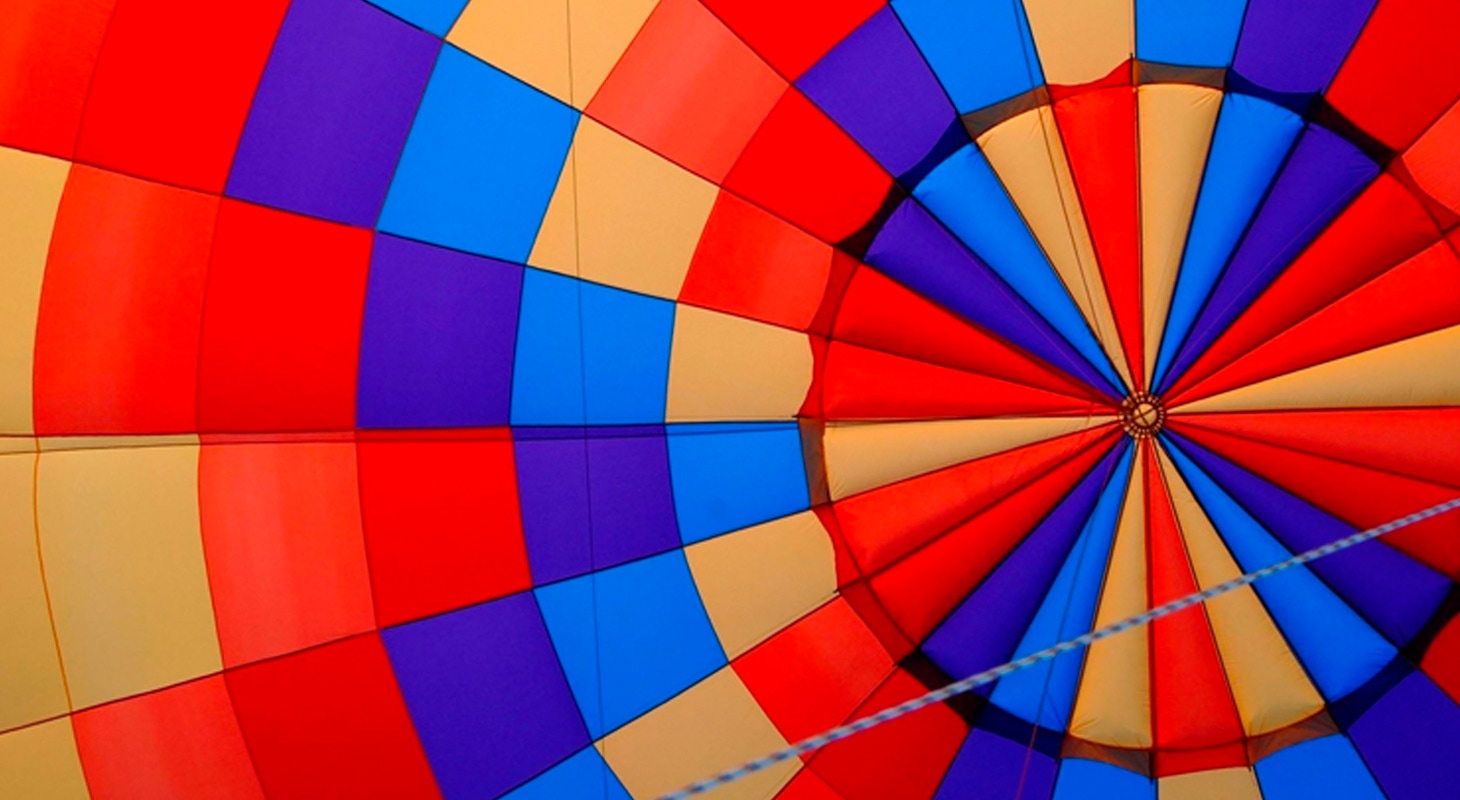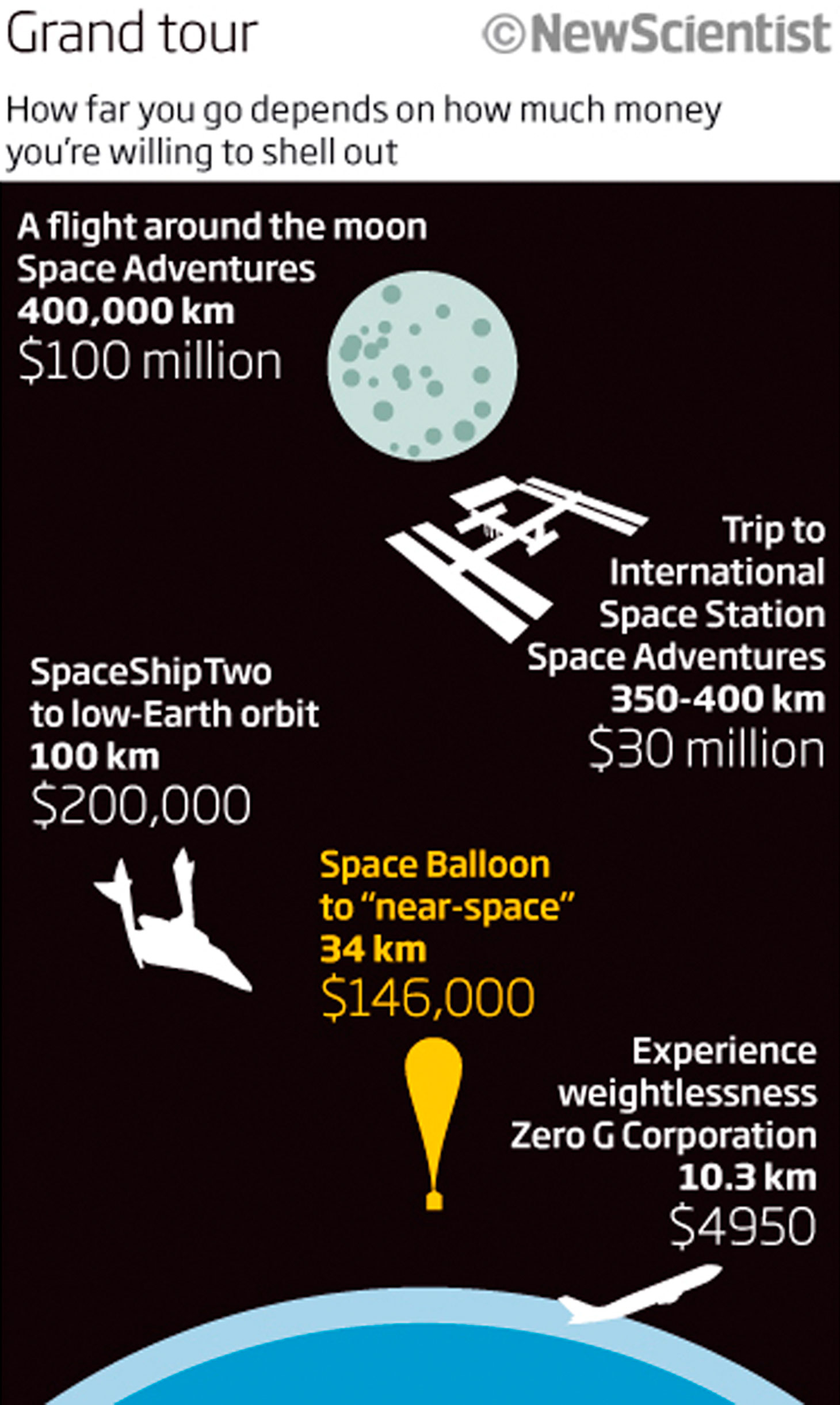
Hot Air Balloon Rides: A Guide to Flights & Festivals
There’s something truly magical and fantastical about a hot air balloon. A symbol of humans’ early aviation hopes – long before we all became well-acquainted with traversing the globe in swanky metal cylinders – a hot air balloon puts you at one with the elements, giving a glorious bird’s-eye view of the world below. And considering that these days our lives are filled with so many things vying for our attention, what could be a better escape from it all than a balloon adventure, elegantly drifting wherever the wind takes you?
But if you’ve got a few minutes before you step into that basket, let’s delve into the world of hot air balloons...
Table of Contents [ hide show ]
History of the Hot Air
Balloon
What exactly is a hot
air balloon?
How do
balloons fly?
What is a hot air
balloon made from?
What type
of fuel does a hot air balloon use?
How long does a balloon
last?
Can
you steer a balloon?
Do you need a
license to fly a balloon?
Interested in
learning to fly a balloon?
How many
people do you need to fly a balloon?
Balloons &
Weather
Love is in
the air
The Mile High Balloon Club
Hot Air Balloon Weddings
Balloon Ride
FAQs
Festivals
n’Fiestas, Races ‘n’ Rallies
January
March
May
May
& June
June
July
July - August
August
September
October
November
Hot
Air Balloon Clubs
Ballooning record-breakers
Most
Instagram-friendly balloon rides
Cappadocia, Turkey
Serengeti National Park,
Tanzania
Albuquerque, New Mexico
Namib Dessert, Namibia
Bagan, Myanmar
The Future of Hot Air
Balloons
Visit Xperience Days Now!


What goes quack, baa, cock-a-doodle-doo?
Why, the first hot air balloon, of course!
On September 19th, 1783, the balloon took to the skies bearing its passengers – the unlikely trio of a duck, a sheep and a rooster – skywards. The Aerostat Reveillon, as it was called, had been designed by French scientist Jean-François Pilâtre de Rozier, and during this maiden, farmyard-animal-laden voyage, it stayed afloat for 8 – 15 minutes (reports vary). A crowd of 130,000 people, including Louis XVI and his wife Marie Antoinette, were present to admire the spectacle.
Naturally, you’re wondering how the animals fared. Well, the balloon landed safely, and of its passengers, historian Simon Schama notes:

It was judged that they had not suffered,’ ran one press comment, ‘but they were, to say the least, much astonished.’
As an aside, it seems a shame that they picked shorter creatures, who didn’t get to peek over the top of the basket – how about a flamingo, a llama and a goose?
But I digress…
With that first successful flight under his belt, Pilâtre de Rozier worked with brothers Joseph-Michel and Jacques-Étienne Montgolfier to produce a balloon which could carry human passengers. The Montgolfier brothers were local paper manufacturers who designed a balloon made from paper and cloth. It was inflated thanks to an open fire burning a mixture of straw, chopped wool and dried horse manure – how fragrant! I know what you’re thinking: this early model, with its paper + fire combo, must’ve been a rather dicey design!
On November 21st, 1783, the world’s first manned hot air balloon took to the skies. The pilots were Jean-François Pilâtre de Rozier (yep, him again) and his pal Marquis d’Arlandes, and they flew from the center of Paris to the suburbs almost six miles away. They were airborne for twenty minutes.
Benjamin Franklin was one of the witnesses to this remarkable voyage, and his journal records:

We observed [the balloon] lift off in the most majestic manner. When it reached around 250 feet in altitude, the intrepid voyagers lowered their hats to salute the spectators. We could not help feeling a certain mixture of awe and admiration.
The wonders of hot air balloon travel had begun!
What exactly is a hot air balloon?
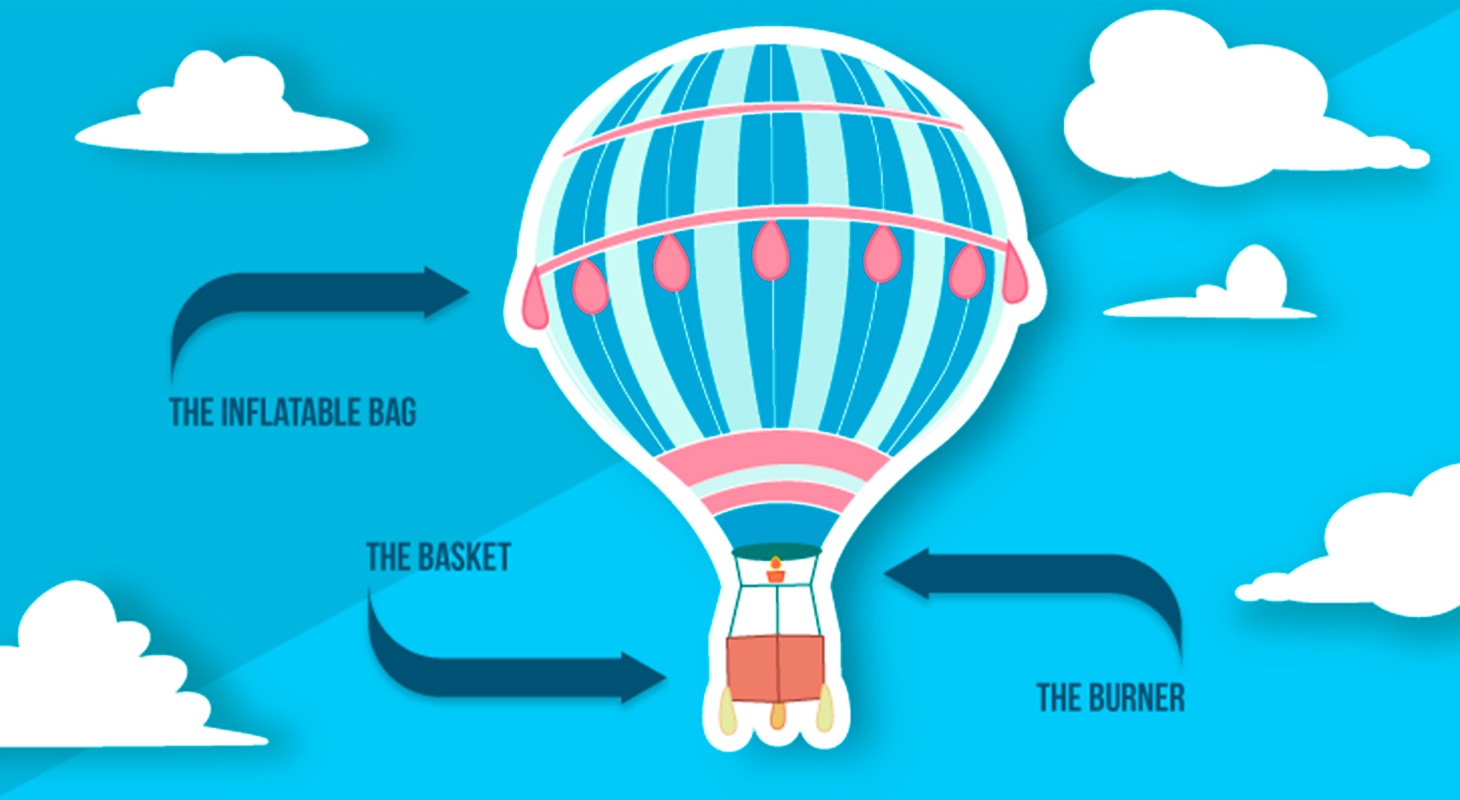
A hot air balloon has three main parts:
1. The inflatable bag, made of fabric, which is known as the envelope.
2. The basket, where the passengers stand during the flight.
3. The burner, which heats the air and makes the balloon fly (yippee!)
According to Balloon Travels, the burner ‘does the same job in a balloon that the engine does in the family car’. That certainly helps me picture how it works – though the mention of a family car immediately brought Homer Simpson to mind for some reason… hmm.
Keep reading for another unlikely Simpsons link...
How do balloons fly?

Okay, I’ve got two alternative explanations for you here. If you’re the type of guy or gal who’d prefer a more precise account, this is for you:

Hot Air Balloons operate through the basic principles of gravity and heat
transfer. As air inside the balloon is heated past the ambient temperature
of its surroundings, it gains altitude.
Sky Drifters
But if I lost you at ‘basic principles of gravity’, you might find this account jollier and, um, more uplifting:

Hot air goes up! Cold air goes down!
Rainbow
Ryders
Everyone clear? Super! Let’s move along...
What is a hot air balloon made from?

The envelope (see how we’re getting the lingo now?) is made from rip stop nylon, which has a special coating to prevent hot air from escaping (naughty hot air!). Think of the fabric parachutes are made from – it’s along the same lines.
Traditionally, the basket is made from wicker which is both lightweight and durable. That’ll be why it’s also good for picnic baskets, then. According to balloon manufacturers, Lindstrand:

[Wicker] is still the best choice for strength, flexibility,
impact-absorbency, and ease-of-repair… The wicker, rather than you and your
passengers, will absorb much of the shock on landing. And it is
aesthetically quite pleasing.
Lindstrand
Good to know, don’t you think? If wicker ever comes up in a quiz, you’ll be ahead of the game...
What type of fuel does a hot air balloon use?
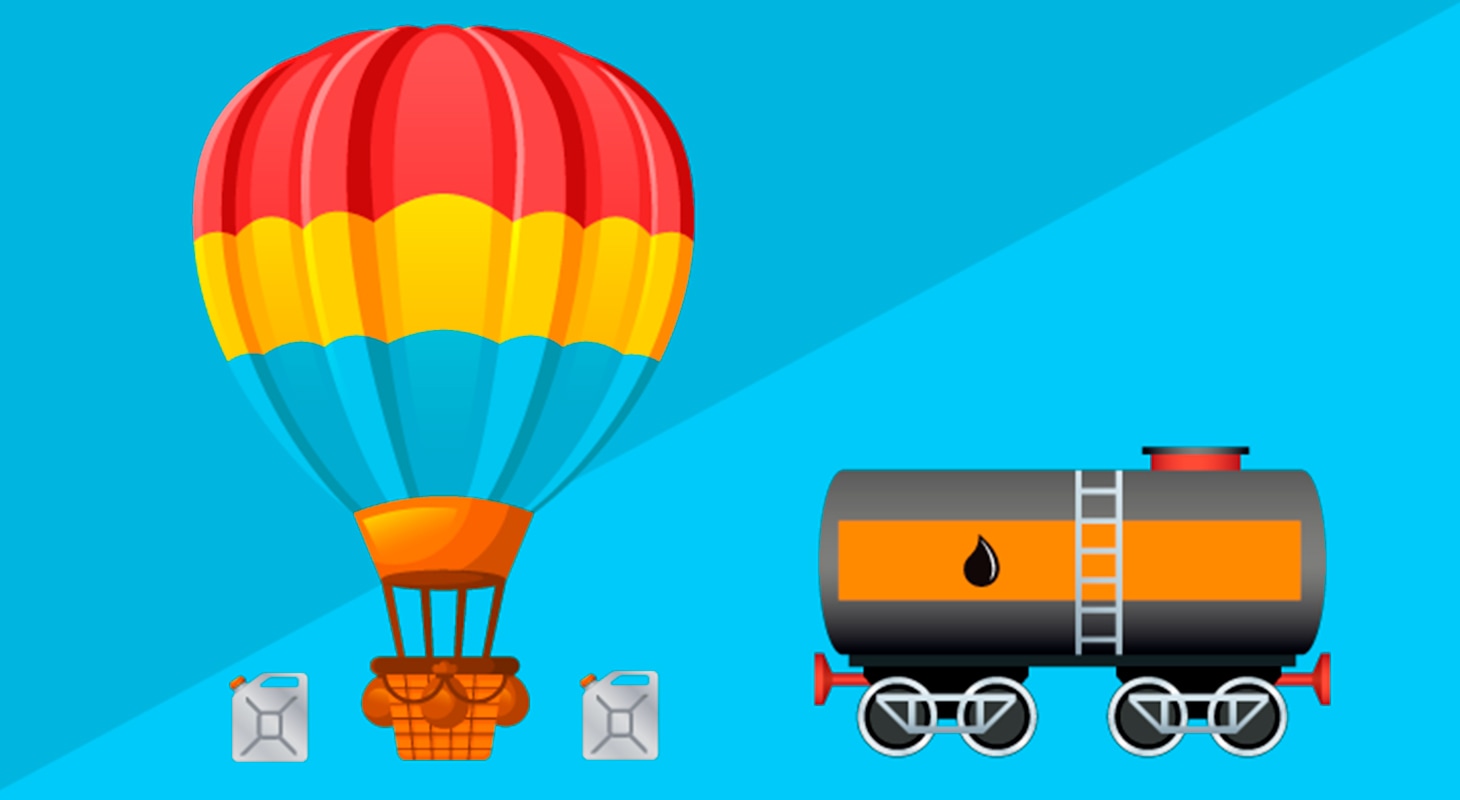
The balloon’s burner uses propane, which is carried in stainless steel tanks. An average flight will use approximately 30 gallons of fuel an hour. According to HAVNFUN Hot Air Ballooning, the burner generates enough BTU’s to heat over a hundred houses for several hours. Crikey!
How long does a balloon last?

The average envelope will last for around 300-500 hours, depending how it’s flown. Pilots record flight hours in a log book which serves as the balloon’s ‘odometer’.
Can you steer a balloon?

For the most part, no! A balloon’s path is dictated by the direction of the wind, so the best thing is to just lean back, and enjoy floating wherever it takes you...
However, skilled pilots can somewhat adjust the balloon’s journey by tinkering with the altitude and making use of different wind speeds and directions.
Do you need a license to fly a balloon?

Indeed, you do. Hot air balloons are federally licensed aircraft, so to operate one, you’ll need a pilot’s license.
Interested in learning to fly a balloon?

Great, because anyone with the enthusiasm for it can become a hot air balloon pilot. For starters, learn as much as you can about balloons. Then, to gain experience, you could join a local crew (check out commercial balloon companies and local ballooning clubs) or take some lessons with a qualified pilot instructor. You’ll nab a pilot’s license from the FAA once you’ve gained all the necessary experience, passed a written test, and completed a flight test with an FAA examiner.
How many people do you need to fly a balloon?

Generally, you’ll need at least a three-person crew. There’s the pilot, of course, plus a couple of members of the chase crew. These are an integral part of a balloon’s team They help prepare for the launch, then follow the balloon while it’s airborne, meeting the pilot and any passengers upon landing, and getting the balloon packed away.
Balloons & Weather

As Coachella Valley’s HAVNFUN Hot Air Ballooning sagely note:

Ballooning is strictly a fair-weather sport.
HAVNFUN Hot Air Ballooning
Too true.
While making ballooning possible, weather conditions also naturally dictate whether a balloon can fly safely. The main requirements for taking to the skies are decent visibility and a good wind speed (shouldn’t exceed 8mph).
There are other weather concerns, too, such as temperature, pressure systems, plus rain and fog (both of which reduce visibility, but rain makes the balloon heavier to fly and can damage the envelope, too). These will all be sensibly taken into account by the pilot before the decision to fly is made.
Love is in the Air

A balloon ride can be unforgettably romantic, so it’s no surprise they’re such popular experiences for couples. Many companies have packages which amplify the sweetheartness with champagne, chocolates, and other treats. Plus, it goes without saying that a balloon ride is a spectacular setting for a proposal.
If you’re thinking of declaring your lifelong devotion while breezing along in a balloon, you’ll find plenty of places that cater specifically for such an occasion. Some of them can even provide an aerial photography company who’ll film both the glorious journey and the question-popping itself! So, you’ll be able to relive the moment long after your feet are back on solid ground – though, if you got a yes, we guess you might still be walking on air!
Don’t forget to check out the private balloon rides we offer here at Xperience Days – available in cities across the US!
The Mile High Balloon Club
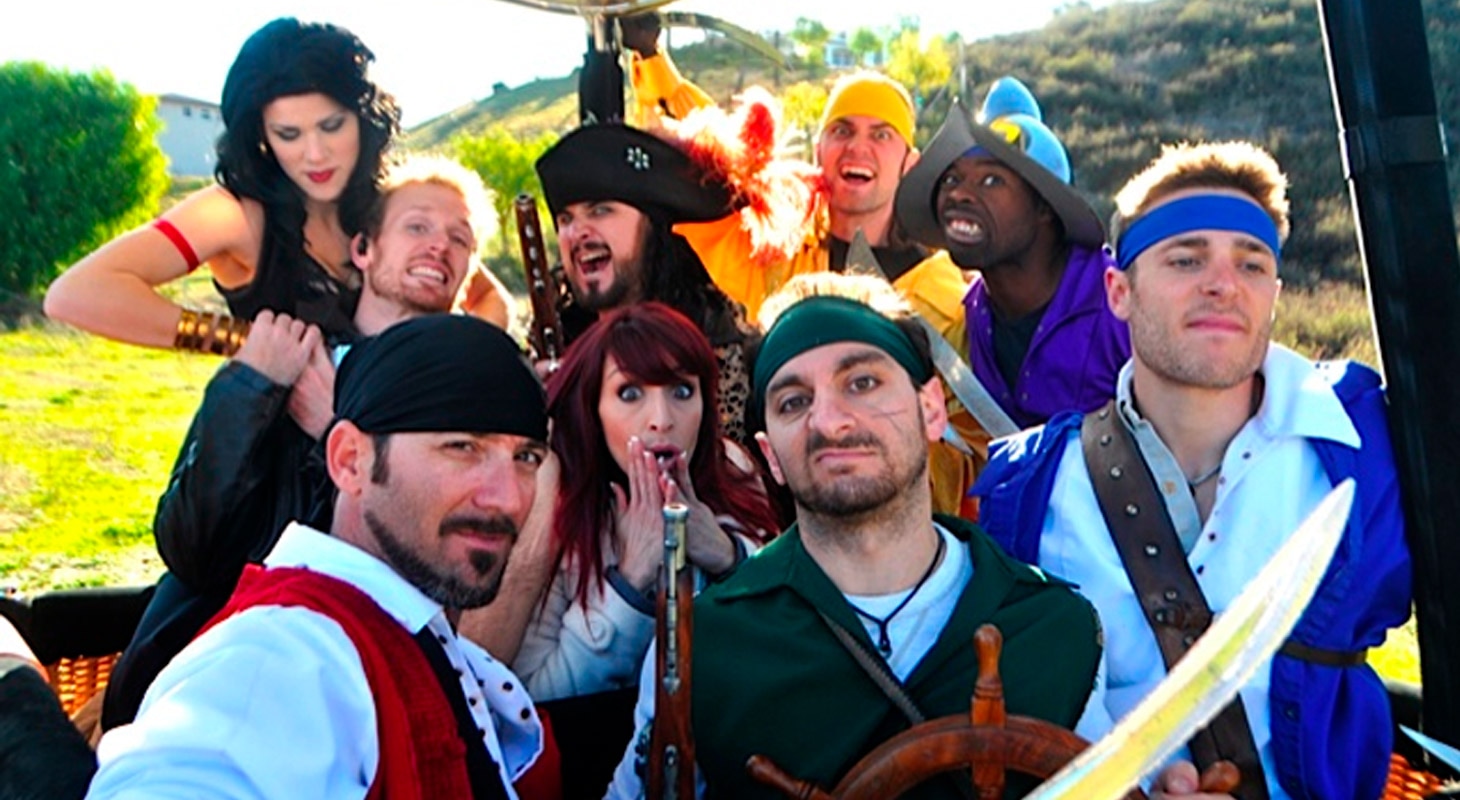
Ooh la la!
If you and your honey want to add a frisson to your flight, then listen up.
Blush-worthy as it might seem, it is possible to book a ballooning adventure that caters for your Mile High Club desires. It’s pricey – but (somewhat) private, with your pilot hidden behind a screen and adorned in protective hearing gear (he or she may be shielded, but won’t any passing birds be surprised!). So much more imaginative than sneaking in a quickie on that run-of-the-mill airline flight home for Thanksgiving, hmm?
And you might remember my earlier mention of Homer Simpson… Apparently, he and Marge wanted to join this particular Mile High Club, too!
Find out more at Magical Adventure Balloon Rides and Aerial Tours.
Hot Air Balloon Weddings

On the subject of romance… proposal aside, if you fancy getting hitched in the clouds, you can indeed say ‘I do’ in a balloon.
Yep, your wish is many ballooning companies’ command, and there are an assortment of options for such a ceremony:
-
An on-solid-ground wedding service followed by a balloon flight
-
A private basket-for-two (well, four, if you count your pilot and your officiator… you won’t want to forget them!)
-
An airborne ceremony sharing a basket with a handful of loved ones – or, if you want to be joined by more than one balloon-ful of guests, some companies will fly multiple ones alongside you, broadcasting the ceremony using aircraft radios!
That will certainly make for a day to remember!
Incidentally, 100 Chinese couples set their ring-exchanging, record-breaking sights on becoming officially the most people to exchange wedding vows in the air. Sadly, the gang at Guinness World Records must have missed their invitation (Doh!), so the event was not officially sanctioned and, therefore, did not float into the record books.
Balloon Ride FAQs
When can you fly in a balloon?
Flights generally take place within two hours after sunrise and two hours before sunset. This is due to safety considerations – namely, that winds are usually calmer at these times. There’s some environmental science involved here – but as I was always hopeless at science (sigh), I’ll let the gang at Skydrifters explain:

The sun’s uneven heating of the earth’s surface causes strong, variable winds making afternoon flights unpredictable. In the morning, it takes a few hours to heat the earth’s surface enough to generate the thermal activity that creates wind. In the evening, the sun’s intensity has diminished enough to reduce winds to acceptable flight levels.
How high does a balloon fly?
In other words, will your head really be in the clouds? Well, the highest recorded balloon flight may have reached nearly 69,000 feet (crumbs!), but most commercial flights will take you up to a few thousand feet, depending on the windspeed and direction.
How far does a balloon fly?
Again, it’s tricky to predict, as this depends on the windspeed. As flyhotairballoons.com advise:

We go where the wind takes us. Our flight path is determined by wind currents at different levels. These currents determine the direction, altitude and speed at which we fly… Every flight is different!
Can I fly past my house?
Um, in a word, no!
Firstly, hot air balloons can’t fly in highly populated areas (which is why you don’t see them floating right past your office window… unless your office is in a field, that is).
But also, as you’ll be floating where the wind takes you, it’s not possible to guarantee a specific route or direction. That’s part of the adventure!
How long is a balloon flight?
Many commercial balloon flights will last approximately an hour, depending on the windspeed, general weather conditions, and your pilot spotting an appropriate place to land. The whole ballooning experience will take longer though, possibly a few hours, factoring in flight preparation and the return to the launch site after landing.
Where will the balloon land?
That’s part of the magic – you just don’t know!
Having assessed the wind direction, your pilot will know which way you’re likely to travel, but – particularly as those free-wheeling balloons can’t be steered – you’ll be bobbing blissfully along wherever the breeze takes you. Yup, like Cabbage Patch Dolls, no two flights are the same!
After about forty-five minutes in the air, the pilot will start to scout a suitable landing place. The chase crew, who’ll have been following your journey from the ground, will meet you where you land.
What is the landing like in a hot air balloon?
To answer that, here are some wise words from Virgin Balloon Flights:

…sometimes on landing the basket can tip and/or drag along before coming to rest. This is how balloons have been landing for over 200 years and is perfectly normal… The landing is an exciting part of the experience and in many cases, people say it is their favourite part of the flight.
How many people fly in a balloon?
Well now, this varies – some smaller balloons will carry 2 to 4 people, but often a ride will take up to 10 or 12 passengers. There are also larger baskets which can take a group of up to 24 or 30 people. Very sociable!
What should I wear on a balloon flight?
Here are a few handy tips...
You’ll want to dress comfortably and for the outdoors
Definitely wear sturdy, closed toe shoes (so no sandals, or flip flops, and even if your balloon ride is a festive occasion, don’t dig out your party heels)
Long pants are recommended, and it’s advisable to wear layers, for wrapping up or peeling off to the most comfortable temperature – particularly given that it’s likely to be toastier in the basket than on the ground
Finally, a hat may be handy to protect from the heat of the burners (plus it’ll look jaunty, right?)
Um, how do you get into the basket?
Good question! Baskets are a door-free zone, so you’ll need to just hop right in! And don’t worry about being graceful – everyone will be in the same boat – sorry, basket.
Are there any restrictions on balloon rides due to age, weight or height?
Unlike certain rides at the funfair, there aren’t any height restrictions when ballooning – plus this should be more meditative and tranquil than a rollercoaster (though saying that, most things probably are…!).
However, some companies have age restrictions, limiting flights to children of 5/6/7 years or older. This varies, so best to check your flight provider’s FAQs. And on the subject of little ‘uns, you might want to note that some small children don’t like the noise from the burner blast (forewarned is forearmed, and all that).
As to weight, here’s what the Skydrifters team have to say:

Every Balloon has a maximum level of weight it can carry. This weight is affected by the ambient temperature around the balloon and at what altitude it is flying. Before a flight, the pilot uses the passenger’s weight to decide how many people can go in each basket.
You’ll also need to be able to climb over the sides of the basket and stand unassisted for the duration of the flight. For wheelchair users who fear this may exclude them – worry not! There are balloon ride companies who can ensure you’re whisked aloft!
What about restrictions due to medical conditions?
The majority of balloon ride companies – certainly all the ones we’ve come across – won’t permit you to fly if you’re pregnant or might be pregnant (I know, disappointing… but you’ll just have to wait until after baby has arrived). Also, if you’re suffering from a significant medical condition, have had recent surgery, or been scuba diving within 48 hours of the flight, some companies will recommend that you stay on the ground, for now. Generally, of course, if you have any queries regarding medical concerns, it’s best to check before you fly.
A few other things you might be wondering about your balloon ride…
Wisdom courtesy of the thoughtful folk at Rainbow Ryders…
What is the temperature in the balloon?

Due to the burners, the temperature in the balloon is a few
degrees warmer than the surrounding air, despite the increased
altitude.
Rainbow Ryders
Toasty!
Is it quiet in the balloon?

When the burner is off, it is extremely quiet. Quiet is one of
the most enjoyable aspects of ballooning.
Rainbow Ryders
Peaceful!
Does the basket sway when flying?

The basket does not sway since it moves with the wind. No need to
worry about motion sickness.
Rainbow Ryders
Phew!
Festivals ‘n’ Fiestas, Races ‘n’ Rallies
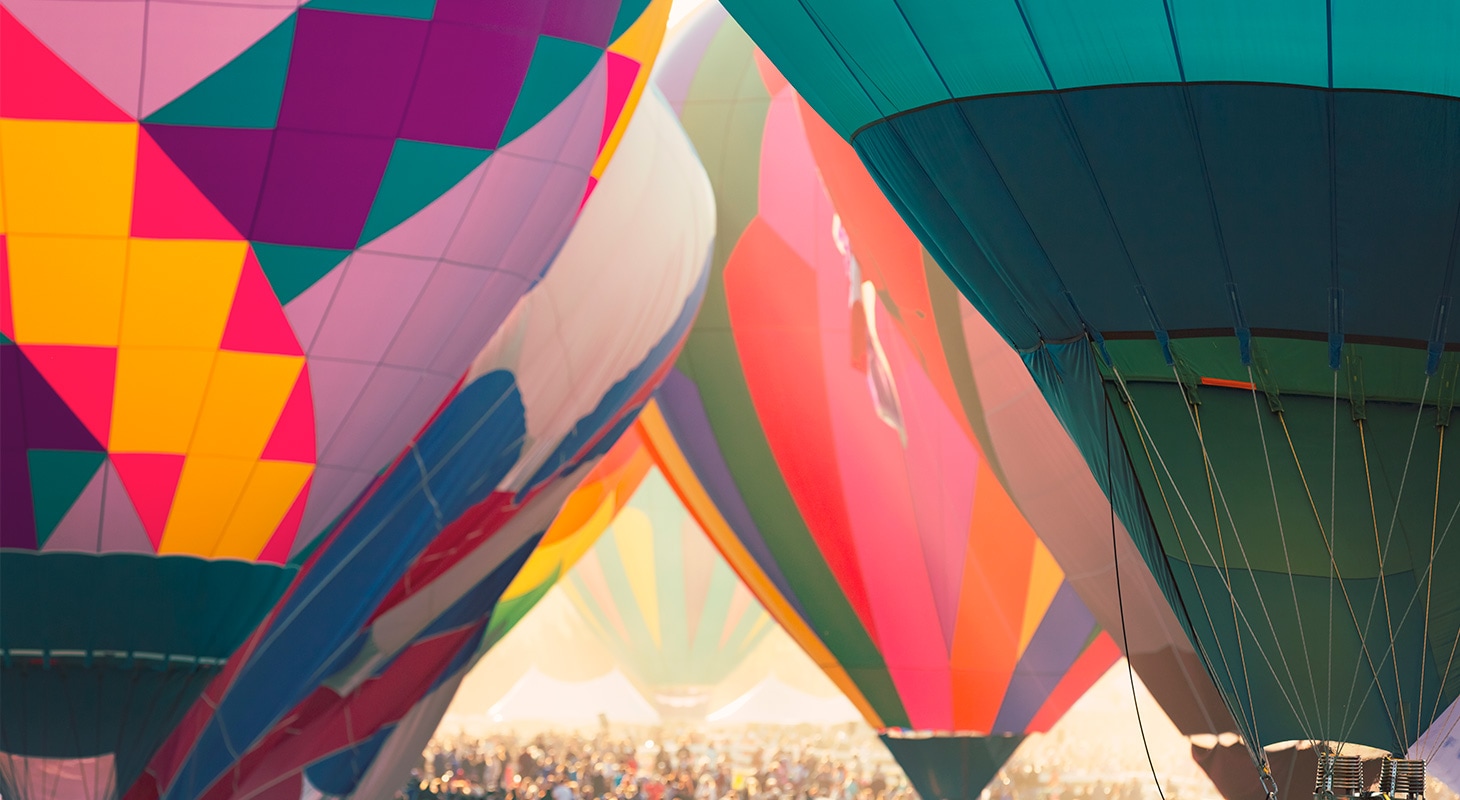
There are many spectacular balloon gatherings across the US, and to help you find them, here’s what we hope is a fairly extensive (if not exhaustive) list. Most are annual events, and we’ve listed them chronologically. Hopefully, whenever you’re reading this, you’ll find one happening near you sometime soon – or maybe you’ve just stumbled upon an excuse for a vacation?
January
March
May
The oldest hot-air balloon race in the mid-South, the Alabama Jubilee started in Decatur, Alabama in 1978. The evergreen popularity of the event led the Alabama Legislature to designate the City of Decatur as the “Ballooning Capital of Alabama.” Fancy!
May & June
‘Ballooning Comes To Alpine Helen’ ran a local headline in 1974, the year after this balloon race began. The article described Helen as “always a delightful surprise” and “a bit of the European Alps, architecture and all, transported to a magnificent mountain-surrounded valley in North Georgia.” Sounds marvellous – and the perfect place for a balloon race!
June
The Temecula Valley Balloon and Wine Festival combines ballooning enthusiasm with a taste for the local wineries’ produce… and what a combination! The Rancho California Balloon and Wine Festival, as it was first known, was founded in 1983 by Walt Darren, a commercial airline pilot and keen balloonist, along with veteran event organizer and fundraiser, Evelyn Harker. It was Evelyn’s suggestion that the festivities might "fly" even better if they involved some of the area’s other natural attractions such as wine tasting, culinary presentations, and entertainment. She was clearly right, as the Festival is going strong, recently celebrating its 35th year.
June & July
July
Started in 1977, the Great Texas Balloon Race earned host city of Longview the official designation "The Balloon Capital of Texas" by the Governor of Texas in 1985. In addition to daytime balloon flights, the event includes Balloon Glows on Friday and Saturday nights, which are followed by live concerts.
July & August
August
September
Started in the early 1970s, these days, this festival is attended by over a remarkable 150,000 people. Named one of the Top 100 events in North America, the event has received accolades from the Weather Channel, Food Network and been featured in the New York Times.
Founded in 1973, the first race featured six balloons and a dozen or so spectators. Goodness, how it’s grown! Several years after it began, the event was transformed, in part thanks to the Mississippi River Balloon Transit Company, who’ve continued the tradition and kept the Race a free event for the St Louis community – hurray for that! And as their website states, the Great Forest Park Balloon Race is the second oldest in the United States, second only to the Albuquerque Balloon Fiesta. In fact, The Great Forest Park Balloon Race is internationally known as one of the most prestigious balloon races – made especially unique by having a launch site in a major metropolitan area. The expert pilots attend by invitation only.
Started in 1982, The Great Reno Balloon Race is the largest free hot-air ballooning event in the world. As their website sweetly states, with “120,000 spectators attending the event each year, the number of lives touched by the beautiful spectacle continues to rise just like the balloons themselves”.
I’ve been drooling over this ballooning shebang’s website – if you have a few minutes, you really should take a peek. Their archive page is lovely, featuring the Oak Rubber Company, the world’s largest manufacturer of toy balloons throughout the 30s, 40s and 50s. The company had a plant in Ravenna, Ohio – and the Balloon A-Fair Festival was conceived by some enterprising locals who believed Ravenna should celebrate one of the city's earliest industries, namely their toy balloons. Those first small, charming events have ballooned (sorry!) into a merry annual event which recently marked its 40th anniversary. Aah!
October
Having started in 1972 as a gathering of 13 balloons, the Albuquerque International Balloon Fiesta is now reportedly the largest balloon event in the world, attracting over 1,000 balloons! It’s also home to the Special Shape Rodeo, first held at the Fiesta in 1989, an attraction which many other balloon festivals have since added to their programmes – and they certainly look very jolly.
Incidentally, if you’re tickled by the special shaped wonders, check out the website for Cameron Balloons, a British balloon manufacturer, who specialise in all manner of fantastical creations, including Darth Vader and the Minions, racing cars and railway locomotives, turtles, dinosaurs, and roosters…
Statesville has a rich history when it comes to hot air ballooning. The first balloon flight in Iredell County, North Carolina, took place in Statesville on October 4th, 1969. It was the maiden voyage of the Land of Oz, designed by Tracy Barnes, and featured his recently created triangular wicker basket. Tracy went on to found the Balloon Works, a manufacturer now known as Firefly Balloons, which still produces hot air balloons. Meanwhile, in 1974, Statesville native Bill Meadows established the National Balloon Rally – and after a number of name and location changes over the years, the Balloon Fest is still going strong. In fact, it’s the 2nd longest (consecutively) held hot air balloon event in America! Also, the Fest donates a percentage of their profits to local charities, and over the years have donated hundreds of thousands of dollars to community organizations. Go, balloons, go!
November
Hot Air Ballooning Clubs

Aside from rallies and festivals, another way to learn more about ballooning and meet fellow enthusiasts is to join a Balloon Club. You’ll find a really useful list of hot air ballooning clubs on the Hot Air Flight website… there are over thirty in the US, from Alabama to Arizona, from New York to New Mexico.
Ballooning record-breakers
Fancy a few more ballooning facts? Here are some rather high-flying achievements...
The oldest person to fly in a hot air balloon was 109-year-old Emma Carol, who took an hour-long flight in 1895. To date, no-one has beaten her record.
The first people to fly across the Atlantic Ocean in a hot air balloon were Richard Branson and Per Lindstrand. Their record-breaking flight took place in 1987, with the chaps flying from Sugarloaf, Maine, to Limavady, in Northern Ireland. The journey took almost 32 hours and covered 3,075-miles (that’s a lot of hot air).
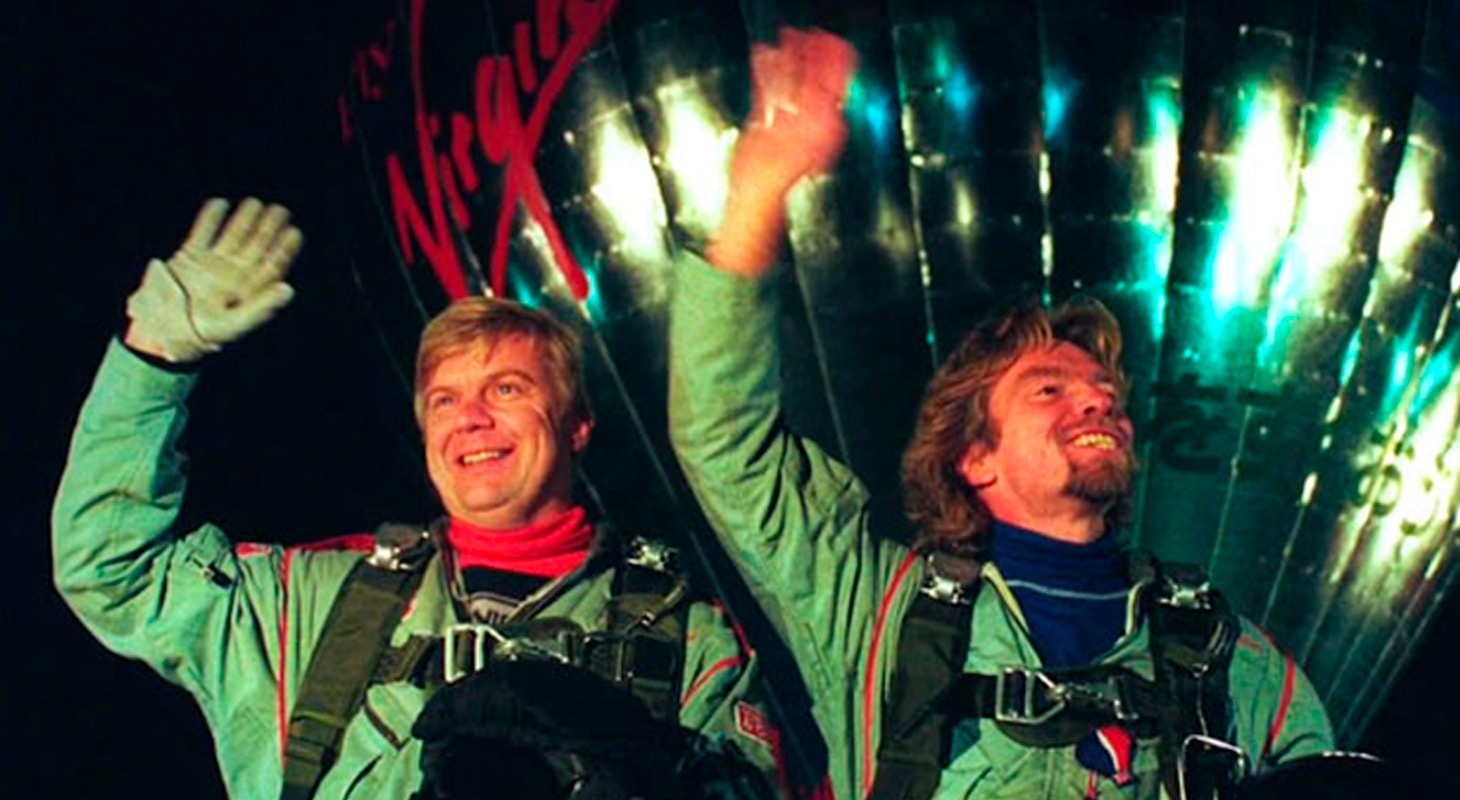
Not content with one ballooning record, Branson and Lindstrand completed the longest flight in a hot air balloon in 1991. They flew their Virgin Pacific Flyer balloon from Japan to Northern Canada, this time covering 4,767.10 miles.
The highest balloon flight was undertaken by Vijaypat Singhania, who reached the dizzying heights of 21,027 metres (68,986 feet) in a Cameron Z-1600 hot-air balloon flown over Mumbai on 26th November 2005.
The official largest mass ascent of balloons took place in July 2013 and featured 433 balloons taking to the skies at the same time. This was part of the Lorraine Mondial Air Balloon gathering, in Chambley-Bussières, who four years later, in July 2017, simultaneously flew 456 balloons (though this recent attempt was not recognized by the Guinness Book of Records).
Most Instagram-friendly balloon rides
Cappadocia, Turkey
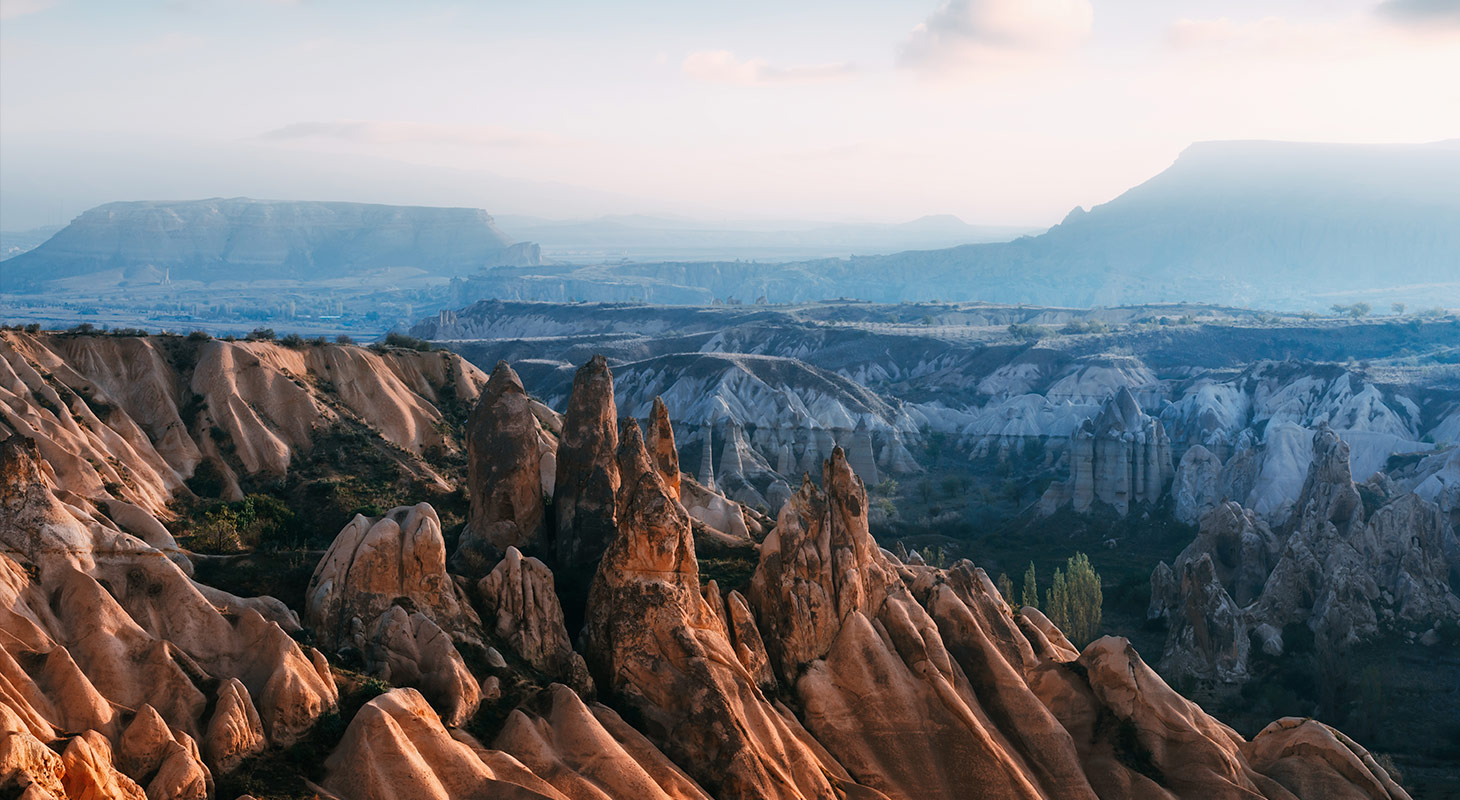
Turkey’s Cappadocia region is on every list of unmissable balloon rides… and doesn’t it look magical! And here it’s described entirely enticingly by Wanderlust:

Surreal rock formations and velvety green vineyards make Cappadocia a magical spot for hot air ballooning. Marvel at the colourful landscape as you bob above the rugged limestone peaks of the iconic 'fairy chimneys' – even more dramatic when you fly at sunrise or sunset.
Serengeti National Park, Tanzania
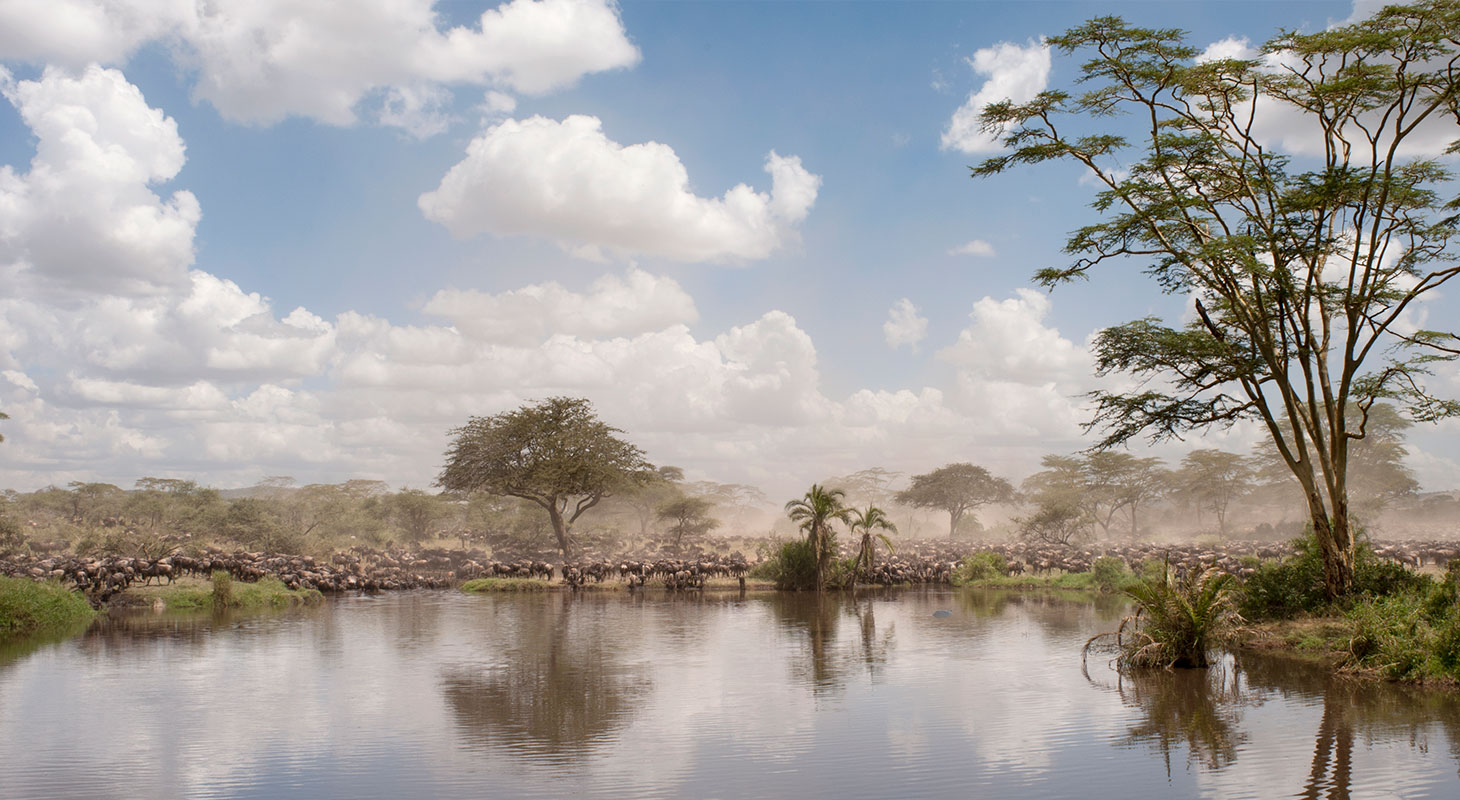
Few things could be more awe-inspiring than a bird’s-eye view of the Serengeti’s wildlife. Tours are available all year round, where you’ll be able to gasp in glorious wonder at the sight of elephants, lions and giraffes roaming in their natural habitat.
Albuquerque, New Mexico
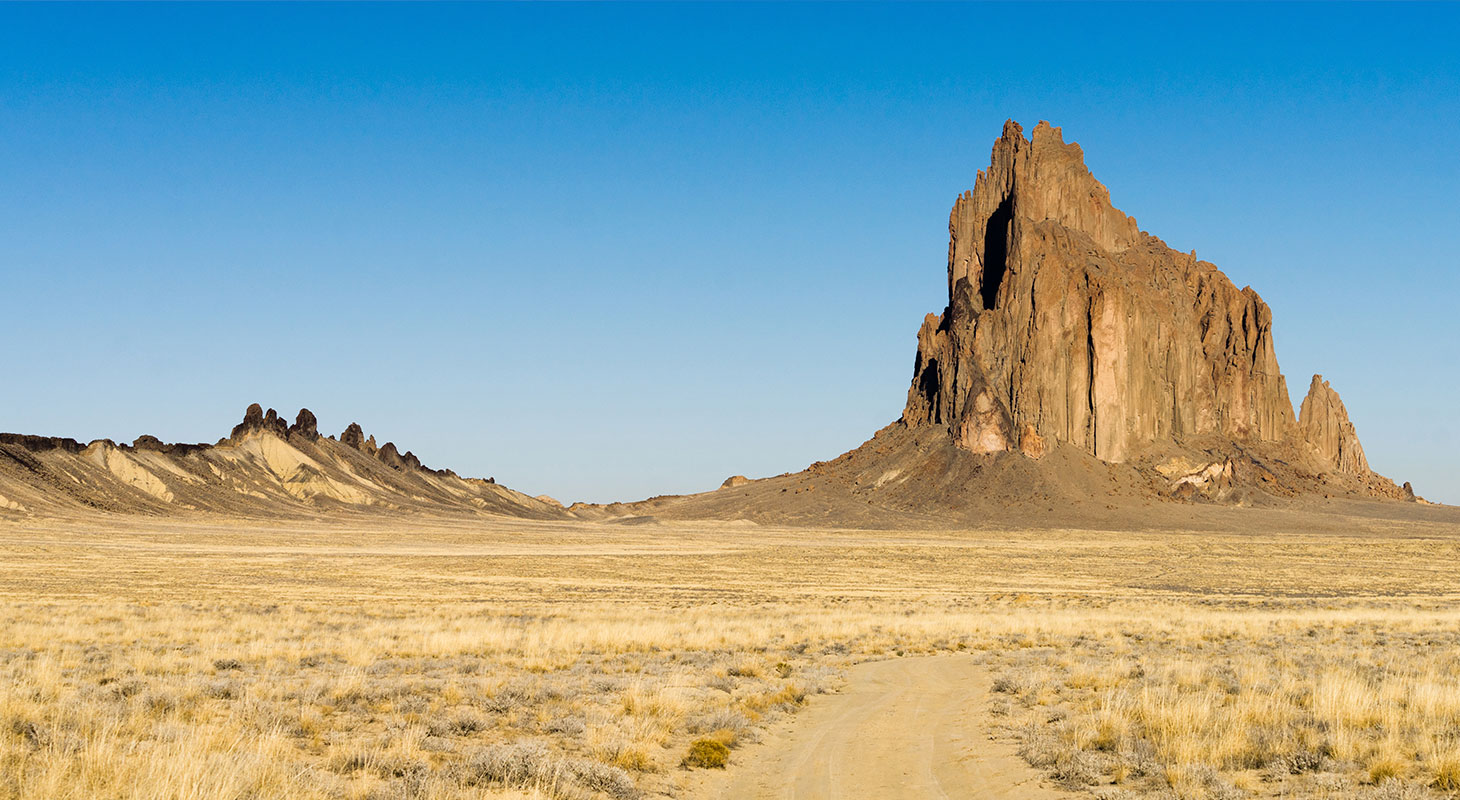
For one of America’s most jaw-dropping balloon displays, Albuquerque is the place to go. And we could barely describe it better than those picture-painting kids at Wanderlust:

As the sun rises over Albuquerque, so do the balloons – a surreal yet magical sight, whether you're in the air or on solid ground.
Namib Desert, Namibia

For truly stunning views of rustic majesty, this is the destination to plump for. Conde Nast Traveler’s description is likely to find you adding this balloon ride to your Bucket List:

The world’s tallest collection of sand dunes, Sossusvlei, in Namibia’s Namib Desert, impresses from any angle. Gawk over hues of red, rust, and orange, punctuated by bare tree trunks, and framed by pure blue skies.
Bagan, Myanmar

Take to the skies for a breathtaking view of Bagan’s historic, iconic architecture. As Wanderlust appealingly suggest:

Drift over thousands of pagodas in the ancient city of Bagan for a truly unique hot air ballooning experience. Mostly constructed between the 11th and 13th centuries, the pagodas sit in silent contemplation on a plain next to the Irrawaddy River – a unique sight in this mysterious country.
The Future of Hot Air Balloons
When our pioneering farmyard trio first took flight, many believed it heralded a new era in human history. Hot air balloons and airships were the future of aviation, and designers set about conceiving ever more fantastical machines.
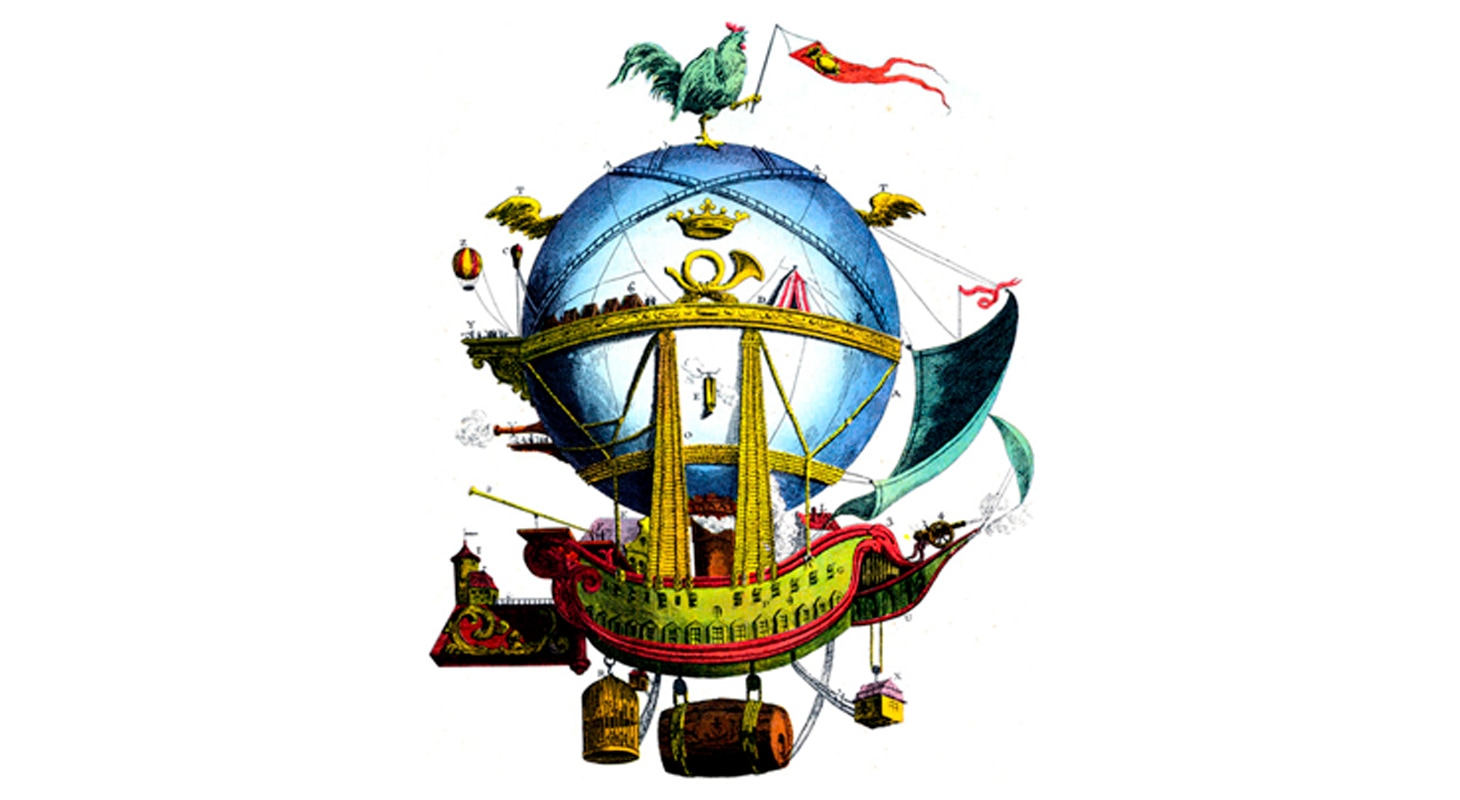
At the dawn of the 20th century, however, the invention of the airplane led to a shift away from lighter-than-air transport. Indeed, the success of the Wright Brothers’ prototype marked the beginning of the end for those dreams of a sky crowded with futuristic hot air balloons.
Nevertheless, balloons still have a role to play. As we’ve seen, today, they’re valued the world over for their sightseeing potential and old-world whimsy.
But what of the future?
Well, it looks bright.
From exploring the rainforest canopy, to generating solar energy, to making affordable space tourism a reality – hot air balloons look set to continue changing with the times.
Indeed, now that we all must face the consequences of climate change brought about by rising greenhouse gas emissions – and given airplanes’ significant contribution to this rise – could we yet see a golden age of green hot air balloon travel?
Of course, only time will tell.
Visit Xperience Days Now!
Well, that about wraps up our guide to hot air ballooning. We hope you’ve found it informative and inspiring!
If you’d like to take a hot air balloon ride yourself, or give one as a unique gift, Xperience Days have an awesome range of certificates which you can browse, here.
What’s more, if you’ve questions or comments concerning any of the hot air balloon rides and festivals we’ve mentioned – please do get in touch below!































